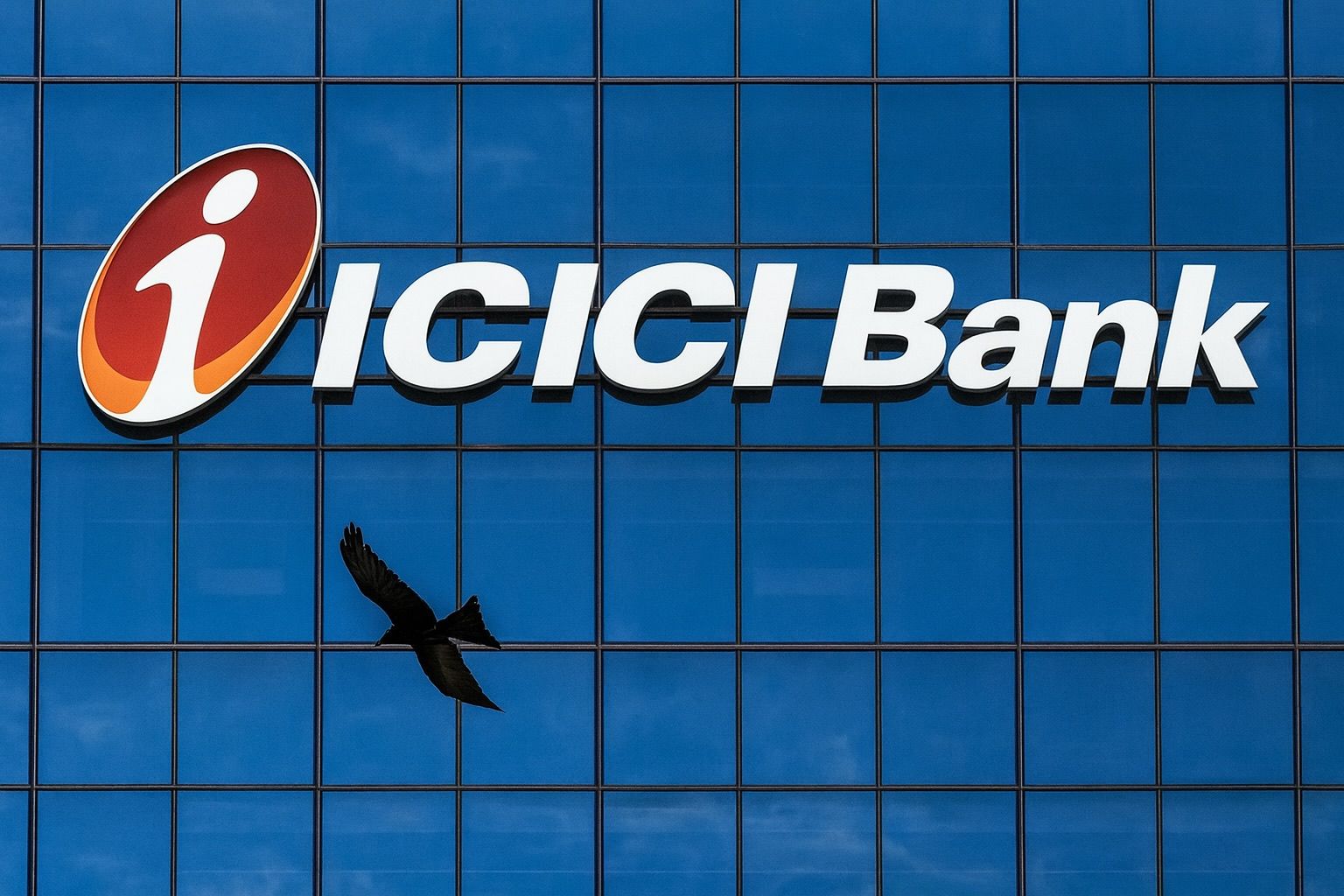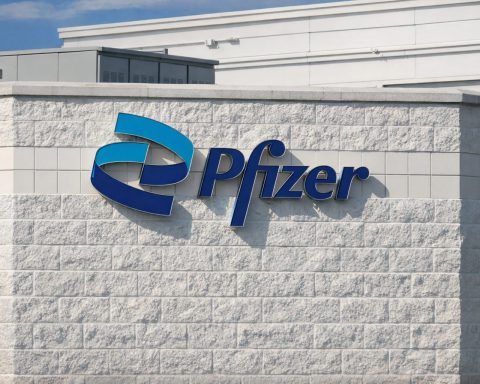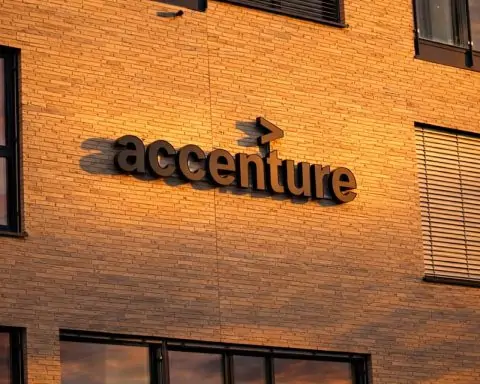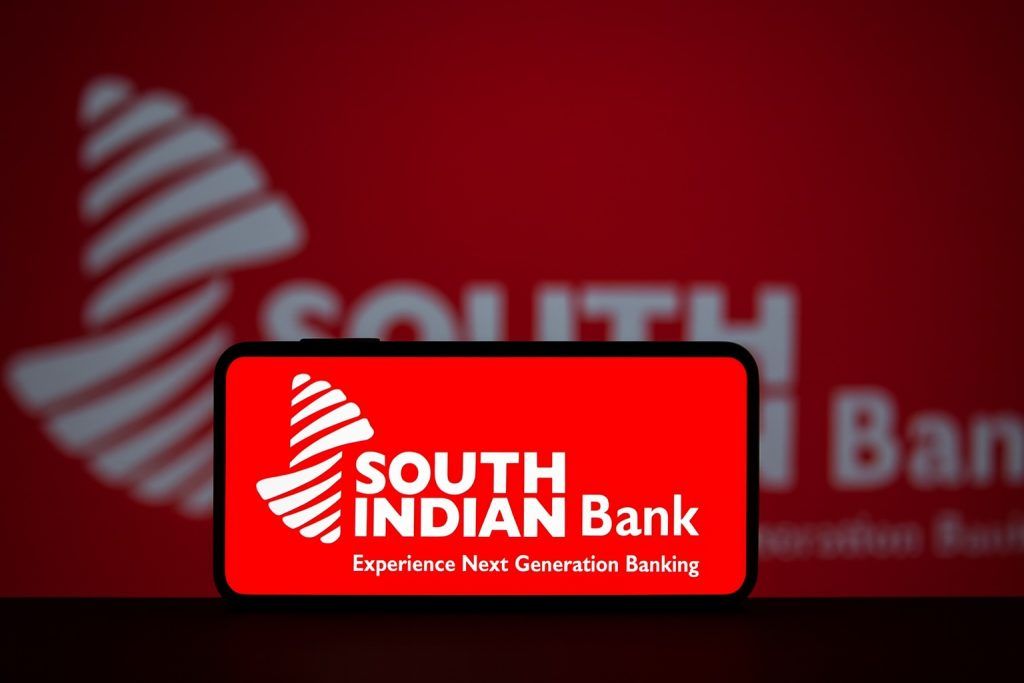- ICICI Bank shares hover around ₹1,380 on October 21, 2025, slightly lower than last week’s close, after a post-earnings dip [1]. The stock is down ~0.5% today and has gained about 8.5% year-to-date [2].
- Q2 earnings beat estimates but spooked investors: ICICI’s net profit rose ~5% YoY to ₹12,359 crore [3] [4], yet the stock fell over 3% on Oct 20 as loan growth moderated (~10% YoY) and gross NPA ticked up slightly QoQ [5] [6].
- Experts remain bullish with up to 25% upside: Morgan Stanley reaffirmed Overweight with a ₹1,800 target (≈25% above current price) [7]. HSBC and CLSA both have Buy calls with targets of ₹1,680–₹1,700 (15–18% upside) [8] [9].
- Prabhudas Lilladher sees “industry-best” RoA and raises target: The brokerage hiked its goal to ₹1,800, citing ICICI’s superior margins and return on assets (~2.1% expected by FY27) and robust retail loan growth outlook [10] [11]. Most analysts maintain Buy, noting premium valuations are justified by strong fundamentals [12] [13].
- Banking sector sentiment upbeat: Rival HDFC Bank hit a record high last week after 11% profit growth and improved asset quality [14] [15]. Public lenders are surging too – e.g. SBI reached all-time highs on earnings optimism [16] – indicating broad confidence in India’s banks despite ICICI’s brief pullback.
ICICI Bank Share Price Today: Mild Dip After Recent Slide
As of October 21, 2025, ICICI Bank’s stock traded around ₹1,380 per share, slightly in the red for the day [17]. The price is down about 0.5% from the previous close of ~₹1,390, continuing to linger after a sharp fall on Monday. On October 20, the stock plunged over 3% intraday, hitting lows near ₹1,389 before closing around ₹1,390.90 [18]. This drop erased gains from the prior week – ICICI had been trading above ₹1,430 last Friday before earnings. Despite the recent volatility, the stock remains up roughly 8–9% in 2025 so far [19], outperforming broader indices. It is currently about 7% below its 52-week high of ₹1,494 [20].
The trading volumes have been elevated during the earnings week, indicating active investor participation. On Monday, volumes spiked as traders reacted to the results and outlook. Analysts note that ICICI’s valuation reflects high expectations – the stock trades at ~18 times trailing earnings, almost double the sector P/E of ~9 [21]. Its price-to-book ratio (around 3x) is above peers’, underscoring the market’s confidence in ICICI’s growth and asset quality. However, that premium also means any disappointment can trigger profit-taking, as seen this week.
From a technical perspective, ICICI Bank’s chart shows support in the ₹1,300–₹1,350 zone and resistance around the ₹1,480–₹1,500 level (near its yearly high). The broader Bank Nifty index recently surged to new highs (crossing 58,000) on the back of strong bank earnings, and analysts peg 58,300 as the next resistance for the index [22]. If positive momentum in financial stocks continues, ICICI could attempt to retrace Monday’s drop. Conversely, a break below ₹1,350 might signal further consolidation. For now, the stock’s moderate volatility (beta ~1.12) suggests moves in line with the market [23].
Q2 Earnings: Strong Results, Surprising Stock Drop
ICICI Bank announced its July–September Q2 FY2026 results on October 18 (Saturday), delivering solid – even better-than-expected – financials. Net profit (standalone) came in at ₹12,358.9 crore, a 5.2% year-on-year increase [24] [25]. This exceeded consensus estimates (a Moneycontrol poll had expected ~2.3% profit growth) [26]. Net interest income (NII) – the core revenue from lending – rose 7.4% YoY to ₹21,530 crore [27] [28], reflecting healthy loan demand. Provisions for bad loans dropped 26% YoY to ₹914 crore [29], bolstering the bottom line. Asset quality improved on an annual basis (gross NPA of 1.58% vs 1.97% a year ago) [30], and the capital adequacy ratio strengthened to 15.76%. By most measures, it was a strong quarter.
Yet, when markets reopened on Monday (Oct 20), ICICI’s share price fell ~3%. The stock closed at ₹1,393, down from ~₹1,437, even as the broader indices rose that day [31] [32]. This counter-intuitive drop despite “strong results” was noted by many observers [33]. What spooked investors? Analysts point to a few factors:
- Loan Growth and Outlook: ICICI’s loan growth was ~10.6% YoY (domestic loans) as of Sept 30 [34] – decent but the slowest in four years, according to Emkay Global, which flagged a “moderation in credit growth” especially in the SME and retail segments [35]. In comparison, some peers grew faster, and IDFC First Bank’s loans jumped much higher (helping its stock surge). The market may have expected stronger momentum from ICICI’s retail franchise. Management also indicated that net interest margins (NIM) might stay flat near-term, not rising in H2 FY26 [36]. This cautious guidance tempered excitement, since other banks hinted at improving NIMs.
- Treasury and One-Off Factors: ICICI’s treasury income fell sharply (₹2.2 bn vs ₹6.8 bn last year) amid rising bond yields [37]. While core operations were robust, the drop in treasury gains and a slight uptick in gross NPA ratio QoQ (from ~1.49% in June to 1.58% in Sept) gave bears a talking point [38]. Essentially, it was a “good, not great” quarter, as brokerage CLSA put it [39] – strong operationally, but without a knockout beat on growth. HDFC Bank, by contrast, posted 11% profit growth and saw NPAs decline QoQ [40] [41], making ICICI’s numbers look more modest by comparison.
- Profit-Taking at High Valuations: ICICI’s stock had rallied into earnings (it jumped ~2.9% on the Friday before results [42], anticipating good news). Once results were out, some investors likely booked profits, especially since ICICI’s profit growth (5%) was only half of HDFC Bank’s 11% [43]. The brief earnings euphoria across banking names meant ICICI’s high expectations were already baked into the price. The slight earnings miss relative to the most bullish forecasts (Emkay noted a 3% profit shortfall vs its estimate [44]) and management’s conservative outlook provided a trigger for a short-term selloff.
Notably, HDFC Bank’s stock rose on Monday – it hit a lifetime high of ₹1,020 intraday (+1.7%) before closing flat [45] – while ICICI sank ~3%. The divergence stemmed from HDFC’s stronger bottom-line growth and merger synergies, versus ICICI’s moderate growth. “HDFC Bank has outperformed ICICI on several metrics – especially at the bottom line,” the Hindustan Times observed [46] [47]. However, market experts see ICICI’s dip as short-term profit-taking, not a sign of fundamental trouble. In fact, most brokerages reiterate bullish views on ICICI Bank after parsing the results.
Analyst Views: Bulls Target ₹1,700–₹1,800 on ICICI
Despite the knee-jerk drop in share price, the street’s outlook on ICICI Bank remains overwhelmingly positive. Many financial analysts and institutions have come out with buy ratings and robust price targets, citing the bank’s solid fundamentals and earnings potential:
- Morgan Stanley: The global brokerage maintained an Overweight rating and a target price of ₹1,800 on ICICI, implying over 25% upside from current levels [48]. Morgan Stanley’s optimism is anchored in ICICI’s core profitability and growth prospects. They note that premium valuations are likely to sustain given ICICI’s consistent delivery. The firm did not waver in its conviction even after the Q2 numbers, signalling that long-term investors should look past the minor loan growth blip.
- HSBC: HSBC analysts reaffirmed their Buy stance with a ₹1,680 target (nearly 17% higher than the latest price) [49]. They highlighted that ICICI’s operating performance was strong – specifically calling out better-than-estimated NIM, lower credit costs, and healthy fee income in Q2 [50]. While acknowledging slightly slower loan growth, HSBC believes ICICI’s premium “should sustain” given its quality metrics. According to commentary on CNBC-TV18, HSBC tweaked its earnings forecasts only marginally after results [51], suggesting confidence in the bank’s trajectory.
- CLSA: The Asia-focused brokerage termed ICICI’s Q2 “good, not great.” Still, CLSA kept a Buy rating with a ₹1,700 target price (≈18% upside) [52]. CLSA pointed out an interesting nuance: ICICI’s management is not guiding for NIM improvement in the second half of FY26, unlike some peers [53]. This conservative stance might reflect one-off high deposit costs in Q2 that won’t recur. CLSA implies that if ICICI can surprise on NIM or loan growth in coming quarters, the stock could re-rate further. In any case, an ₹1,700 target indicates they see the recent sell-off as overdone.
- Domestic Brokerages: Indian research houses echoed the bullish sentiment. Prabhudas Lilladher (PL) upgraded its projections in an October 19 report and now recommends Buy with a ₹1,800 target [54] [55]. PL’s analysts were impressed by ICICI’s Q2 net interest margin of 4.3%, which actually rose 3 bps QoQ – outperforming peers like HDFC Bank and Axis Bank that saw NIM compression [56]. They attribute this to ICICI’s better deposit repricing and lower provisions. “ICICIB saw a good quarter due to better NIM and lower provisions that led to core profit beat of 4.2%,” the PL report noted [57]. The brokerage expects ICICI to sustain industry-best Return on Assets (RoA) ~2.1% through FY27, thanks to its cost management and credit quality, and thus raised the target from ₹1,730 to ₹1,800, rolling valuations forward [58]. Other Indian firms also remain positive:
- Emkay Global retained a Buy on ICICI (target around ₹1,700) [59]. Emkay acknowledged the slower 10% credit growth but emphasized that ICICI is “well-placed to deliver 2.1–2.3% RoA over FY26–28E” due to its strong fees, controlled costs, and improving margins [60]. In other words, they see the current issues as temporary, with long-term profitability intact.
- Phillip Capital commented that ICICI needs to accelerate loan growth to justify its premium valuation multiples, but did not sound alarm – they still view it as a top-quality franchise [61].
- BOB Capital Markets highlighted that ICICI’s NIM decline was “smaller than expected” [62], implying the bank managed the interest rate cycle well. This is encouraging for future quarters if rates stabilize.
In summary, no major brokerage has downgraded the stock after Q2. The consensus remains that ICICI Bank is a fundamentally strong leader among Indian banks. The median of analyst targets hovers around ₹1,700–₹1,750, suggesting significant upside. Roughly 35 out of 37 analysts covering ICICI have a Buy or Strong Buy rating, with zero Sells, according to Mint’s stock analysis data [63]. This bullish unanimity reflects ICICI’s consistent performance and investor trust in its management.
Short-Term and Long-Term Outlook
Looking ahead, both short-term technicals and long-term fundamentals paint a constructive picture for ICICI Bank’s stock, albeit with some near-term caution.
In the near term, traders will watch if the stock can stabilize above the ₹1,370–₹1,400 zone after Monday’s drop. That area coincides with recent lows and a technical support band. Encouragingly, market sentiment for banks is broadly positive: the Bank Nifty index is at record highs, buoyed by strong Q2 earnings across the sector [64]. Private banks have led the charge – HDFC Bank’s rally to fresh highs was one example [65]. Even smaller banks like IDFC First and Yes Bank saw their shares jump 2–5% post-results [66]. This positive momentum could lift ICICI as well, unless there are bank-specific concerns. Analysts note that the next resistance for Bank Nifty is ~58,300 [67]; if that is cleared, it would signal sustained bullishness in financial stocks. For ICICI specifically, a climb back towards ₹1,450 would indicate that buyers have regained control. The stock’s 5-day performance is roughly +0.8% [68], showing it has already recouped some losses. However, if broader market volatility or global factors turn negative, ICICI’s high-beta nature means it could swing more sharply.
From a fundamental perspective, ICICI Bank’s outlook remains bright. Key points underpinning its medium-to-long term trajectory include:
- Strong Core Performance: ICICI continues to deliver healthy earnings growth (5–15% range) with one of the highest RoE (~18%) among peers [69]. Its net interest margin (~4.3%) is top-tier, reflecting a CASA-rich deposit base and pricing power. Importantly, Q2 showed that ICICI can hold NIM steady even in a rate cut cycle (the RBI cut rates by 100 bps in 2025) [70] [71]. As rate cuts work through the system, loan demand is expected to pick up in coming quarters [72] [73], which bodes well for ICICI’s revenue. The bank’s management has expressed a positive outlook on retail and SME loan growth continuing, given India’s economic recovery [74]. Analysts widely expect credit growth to re-accelerate in H2 FY26, aided by festive season demand and easier liquidity conditions [75].
- Asset Quality & Risk Management: ICICI has steadily improved its asset quality metrics over the years. Gross NPA is down to ~1.58% (from well over 5% a few years ago), and net NPA a low 0.39% [76]. The slight sequential uptick this quarter is not seen as alarming – it may be due to one-off recognition in a particular segment. Overall, provision coverage is robust, and the bank is well buffered against any shocks. Even as the RBI’s loan stress norms evolve, ICICI and other large banks have indicated they are comfortable with the changes [77]. Credit costs are at multi-year lows, and ICICI’s management expects benign credit trends to continue. In fact, ICICI Lombard’s strong performance in retail health insurance (a subsidiary) [78] and ICICI’s other businesses add to a diversified risk profile.
- Capital & Liquidity: ICICI Bank is well-capitalized with a total capital ratio >18% and CET-1 comfortably above regulatory requirements. It also enjoys one of the highest CASA (current and savings account) ratios among private banks, which provides low-cost funding. This means ICICI can readily support loan growth without pressuring margins excessively. The bank’s deposit base grew 7.7% YoY in Q2 [79], and recent RBI moves (like a CRR cut to inject liquidity) further boost banks’ ability to lend [80]. ICICI’s management and analysts alike note that slower deposit growth has been an industry phenomenon in early 2025, but with liquidity improving and the government’s tax cuts stimulating the economy [81], deposit mobilization should accelerate. All these factors position ICICI to capitalize on credit demand in coming months.
- Competitive Position: Among Indian banks, ICICI is typically seen as second only to HDFC Bank in the private sector hierarchy. It has actually been closing the gap with HDFC in some areas (like retail loan market share and tech adoption). The recent quarter showed HDFC growing profit faster (boosted by merger synergies), but ICICI still delivered higher NIM and comparable asset quality [82] [83]. ICICI’s management focus on digital banking, fintech partnerships, and customer acquisition has kept it at the forefront of industry innovation. Meanwhile, public-sector banks like SBI are performing well (SBI’s stock soared to record highs on optimism of strong results) [84], which lifts the sector mood but also means ICICI must continue executing to stay ahead. The competition is healthy, and ICICI’s agility gives it an edge in many product segments (credit cards, personal loans, etc.). Analysts at Kotak Securities recently listed ICICI among top picks, praising its “robust financials” and 18% ROE as indicators of efficient operations [85].
- Macro Factors: The broader environment is turning in favor of banks. Interest rates have likely peaked – the RBI’s easing and low inflation outlook reduce the fear of margin squeeze in future [86]. Economic growth in India remains strong (~6%+ GDP), providing a tailwind for credit demand. The government’s capex push and tax relief measures (like those in September) are expected to trickle down to higher loan growth for corporates and MSMEs [87]. Foreign investors have also started returning to Indian equities after months of outflows [88], and banking stocks could see renewed FII buying given their underperformance earlier in the year [89]. These macro tailwinds support a bullish case for fundamentally sound banks like ICICI.
In summary, ICICI Bank’s long-term narrative remains intact. The Q2 results affirmed its steady growth and profitability, even if the market’s immediate reaction was lukewarm. Most analysts interpret the recent dip as an opportunity – a chance to accumulate a leading franchise before it potentially resumes its uptrend. The bank is expected to bounce back as the focus shifts to the next quarter (October–December), where many expect a meaningful recovery in loan growth and continued strong earnings [90].
ICICI vs Peers: Gaining Ground or Losing Edge?
It’s instructive to compare ICICI Bank’s performance and valuation with some peers:
- HDFC Bank: HDFC remains India’s largest private bank and delivered ₹18,641 crore profit (+11% YoY) in Q2 [91] – much higher absolute profit than ICICI’s ₹12,359 crore. HDFC’s growth and scale commanded investor enthusiasm, pushing its stock to record highs and a market cap well above ICICI’s. However, HDFC trades at a premium valuation (over 3x book, similar to ICICI) and its NIM growth was lower (+5% YoY NII) [92]. ICICI actually beat HDFC on NIM expansion and kept asset quality roughly on par. The market rewarded HDFC for stronger profit and integration progress (post-merger), but analysts don’t see ICICI ceding much ground. Emkay, for instance, has Buy ratings on both banks (HDFC TP ~₹1,225, ICICI ₹1,700) [93], suggesting ICICI’s upside may be larger from current levels. The competition is neck-and-neck: ICICI has been gaining in certain retail segments, while HDFC leverages its scale. Both are expected to coexist as top picks in the sector.
- State Bank of India (SBI): SBI, the PSU behemoth, recently rallied to all-time highs, crossing ₹900/share, amid optimism for its upcoming results [94] [95]. At ~₹8.3 trillion market cap, SBI is India’s most valuable lender [96] and trades cheaper (around 1.5x book) compared to ICICI. The PSU bank index as a whole has been on a tear, fueled by earnings beats at banks like PNB (Punjab National Bank) which jumped 4% on strong profits [97]. SBI’s stock itself gained ~2% in anticipation that it will also post robust numbers [98]. The rally shows investor confidence in even government-owned banks’ prospects, thanks to declining bad loans and government support. For ICICI, SBI’s success is a double-edged sword: it lifts sector sentiment (rising tide lifts all boats), but could also attract marginal investor flows due to valuation appeal. Nonetheless, SBI and ICICI serve different investor preferences – one for deep value and public sector exposure, the other for a higher-growth private play. Many portfolio managers hold both.
- Other Private Banks (Axis, Kotak, IndusInd): ICICI often competes with Axis Bank and Kotak Mahindra Bank in similar segments. Axis Bank’s Q2 was strong too, but it saw a NIM decline QoQ (as PL noted, Axis NIM fell 7 bps vs ICICI’s +3 bps) [99]. Axis’s stock is up ~13% YTD, slightly outperforming ICICI’s, and trades around ₹1,230 [100]. Kotak Bank, under new CEO leadership, has been catching attention; its stock jumped 7% in the past month amid management changes. However, Kotak’s loan growth and profit numbers have been more modest. ICICI, with its larger size, has outpaced most mid-size rivals in earnings growth and now even in digital initiatives. IndusInd Bank and Yes Bank are smaller players – Yes Bank actually saw a 2.3% stock rise after Q2 results, and IDFC First soared ~5% [101], but these are more turnaround stories. In contrast, ICICI is a proven leader with consistent performance, which is why it’s often mentioned in the same breath as HDFC Bank at the top of the private sector.
- Market Leadership: It’s worth noting that ICICI Bank’s market cap (around ₹9.87 trillion as of Oct 21 [102]) places it among India’s top 5 companies. It’s a Nifty 50 heavyweight, and thus its moves have outsized impact on indices. This also means the stock is influenced by institutional flows and global sentiments. Recently, foreign investor interest in Indian banks has been reviving – for instance, BNP Paribas acquired a 1.9% stake in RBL Bank this week [103]. Such moves indicate global confidence in India’s banking story. ICICI, being a part of major emerging market indices, often benefits from such allocation shifts.
In summary, ICICI Bank remains a frontrunner in an increasingly strong banking pack. It has kept pace or outperformed peers on key metrics like NIM, and while its profit growth in Q2 lagged HDFC’s, it was still solid. The stock’s recent underperformance relative to some peers (like HDFC’s rally) could correct if ICICI delivers a stronger H2. Many analysts actually prefer ICICI for its balance of growth and stability, and see any peer comparisons as reinforcing the sector’s overall appeal.
Recent News & Developments Impacting ICICI
Several news items and broader events are swirling around that could impact ICICI Bank’s share price in the days ahead:
- Regulatory Changes: The Reserve Bank of India’s new guidelines on loan stress recognition and revised provisioning norms have been a talking point. Large banks including ICICI and SBI have said the new stress asset classification rules are manageable and likely a smooth transition [104]. Any regulatory fine-tuning (for example, RBI tweaking NPA recognition timelines or capital rules) can affect sentiment on bank stocks. So far, the news is that banks are broadly fine with the changes [105], which removes a potential overhang.
- Monetary Policy & Rates: The RBI’s next policy meeting is in late October. With inflation under control, there is speculation of further rate cuts or liquidity measures if needed. Such moves can have mixed effects: in the short run, rate cuts squeeze NIM (as lending rates drop faster than deposit costs), but in the medium term they stimulate credit growth, which benefits banks [106] [107]. ICICI’s management has indicated margins should stay range-bound [108] even if rates fall, thanks to repricing benefits on deposits. Additionally, the RBI recently reduced the Cash Reserve Ratio (CRR), freeing up funds for banks to lend [109]. ICICI, with its large deposit base, likely gained from this liquidity infusion. These macro policy moves are generally stock-positive, as they signal support for the banking sector.
- Global Cues: International developments like US Federal Reserve decisions, oil price fluctuations, or geopolitical events can indirectly sway Indian bank stocks. Last week, global jitters had impacted Indian markets, but optimism returned on hopes of easing US-China trade tensions [110]. There are reports of a possible Trump-Xi meeting and tariff relief, which lifted sentiment globally [111]. Indian banks rallied in anticipation of such positive cues – ICICI’s stock was not immune to global risk appetite changes. Similarly, U.S. bank earnings and bond yield movements can affect ICICI via foreign investor mood. As of now, with global markets relatively upbeat and oil prices stable, there are no immediate external shocks on the radar, which is supportive for ICICI.
- Company-Specific News: ICICI Bank itself has been in the news for various initiatives. It recently announced a ₹625 crore donation to Tata Memorial Centre for building a cancer care facility [112], showing its CSR commitment. While such philanthropy doesn’t move stock price directly, it enhances the bank’s brand image. On the business front, ICICI’s subsidiaries (insurance, asset management) continue to perform well; any plan to unlock value there (e.g., potential IPO of ICICI Securities or monetizing stakes) could be a catalyst. Additionally, management commentary in the earnings call mentioned that provisions may inch up seasonally in Q3 (festival quarter usually sees some rise in delinquencies) [113], but this is well telegraphed. Investors will watch the festive season loan growth data – early indications are positive with retail credit demand picking up, which could benefit ICICI’s Q3.
Lastly, a notable buzz is around Samvat 2082 (Diwali) trading strategies. In the traditional Muhurat trading recommendations, ICICI Bank has featured as a top Diwali pick for some advisors [114]. For instance, a Mint article listed ICICI among four stocks to buy during the festive season, reflecting confidence that the current valuations are attractive. Such positive mentions in financial media around Diwali often bring additional retail interest to the stock.
Conclusion
ICICI Bank’s share price at ~₹1,380 (as of Oct 21, 2025) belies the strong fundamentals the bank has just demonstrated. The recent dip, triggered by a mix of high expectations and a few tempered growth metrics, appears to be a short-term hiccup in an otherwise steady climb. The broader banking sector momentum – with banks across the board posting robust earnings and stocks rallying – provides a supportive backdrop [115] [116]. ICICI, as one of India’s premier banks, is poised to participate in this rally once the dust settles from its earnings reaction.
The chorus of expert opinions and forecasts is clearly in ICICI’s favor. When multiple respected institutions – from Morgan Stanley and HSBC to domestic stalwarts like Prabhudas Lilladher – all foresee the stock heading towards ₹1,700–₹1,800 in the coming months [117] [118], it signals a strong consensus bullish view. These targets hinge on the expectation that ICICI will continue delivering healthy growth (perhaps even accelerating in H2), maintain its enviable margins, and keep asset quality tight. If those expectations hold true, the current price could indeed prove a rewarding entry point.
Investors should, of course, remain mindful of risks – be it any resurgence of bad loans, macroeconomic shocks, or intense competition pressuring margins. But ICICI Bank’s track record in recent years has been one of prudent management and consistent outperformance. As Amisha Vora of PL Capital noted regarding the overall market, “optimism is gradually returning, and the stage is set for recovery” [119]. In the banking space, ICICI is likely to be at the forefront of that recovery.
Bottom line: ICICI Bank’s stock may be catching its breath after an earnings-day stumble, but the road ahead looks promising. With strong financials, bullish analyst backing, and positive sector tailwinds, the ₹1,400 level could prove a springboard rather than a ceiling. Many eyes are on whether ICICI can retest its highs and beyond – potentially aiming for that ₹1,700–₹1,800 zone predicted by experts – as the bank continues to grow in what is shaping up to be a favorable environment. Investors and market watchers will be closely monitoring the stock in the coming days for any sign that the next leg up is beginning for this banking giant.
Sources:
- LiveMint Market Data – ICICI Bank share price and analyst coverage [120] [121]
- Moneycontrol News – ICICI Q2 results and analyst reactions [122] [123] [124]
- Prabhudas Lilladher via Moneycontrol – Broker research note raising target [125] [126]
- Hindustan Times – HDFC vs ICICI Bank Q2 performance comparison [127] [128]
- Reuters – ICICI Bank Q2 profit and management commentary [129] [130]
- TS2.tech Market Commentary – Context on banking sector rally (SBI, HDFC Bank, PNB) [131] [132]
- Economic Times / Kotak Sec – Samvat 2082 picks and ICICI’s ROE cited [133]
References
1. www.livemint.com, 2. www.livemint.com, 3. www.moneycontrol.com, 4. www.hindustantimes.com, 5. www.moneycontrol.com, 6. www.hindustantimes.com, 7. www.moneycontrol.com, 8. www.moneycontrol.com, 9. www.moneycontrol.com, 10. www.moneycontrol.com, 11. www.moneycontrol.com, 12. www.moneycontrol.com, 13. www.moneycontrol.com, 14. ts2.tech, 15. www.hindustantimes.com, 16. ts2.tech, 17. www.livemint.com, 18. www.hindustantimes.com, 19. www.livemint.com, 20. www.livemint.com, 21. www.livemint.com, 22. www.moneycontrol.com, 23. www.livemint.com, 24. www.moneycontrol.com, 25. www.hindustantimes.com, 26. www.moneycontrol.com, 27. www.moneycontrol.com, 28. www.hindustantimes.com, 29. www.moneycontrol.com, 30. www.moneycontrol.com, 31. www.moneycontrol.com, 32. ts2.tech, 33. ts2.tech, 34. www.reuters.com, 35. www.moneycontrol.com, 36. www.moneycontrol.com, 37. www.reuters.com, 38. www.hindustantimes.com, 39. www.moneycontrol.com, 40. www.hindustantimes.com, 41. www.hindustantimes.com, 42. www.reuters.com, 43. www.hindustantimes.com, 44. www.moneycontrol.com, 45. www.hindustantimes.com, 46. www.hindustantimes.com, 47. www.hindustantimes.com, 48. www.moneycontrol.com, 49. www.moneycontrol.com, 50. www.moneycontrol.com, 51. www.moneycontrol.com, 52. www.moneycontrol.com, 53. www.moneycontrol.com, 54. www.moneycontrol.com, 55. www.moneycontrol.com, 56. www.moneycontrol.com, 57. www.moneycontrol.com, 58. www.moneycontrol.com, 59. www.livemint.com, 60. www.livemint.com, 61. www.moneycontrol.com, 62. www.moneycontrol.com, 63. www.livemint.com, 64. www.moneycontrol.com, 65. ts2.tech, 66. www.livemint.com, 67. www.moneycontrol.com, 68. www.livemint.com, 69. m.economictimes.com, 70. ts2.tech, 71. www.reuters.com, 72. www.reuters.com, 73. ts2.tech, 74. www.moneycontrol.com, 75. ts2.tech, 76. www.moneycontrol.com, 77. www.livemint.com, 78. www.reuters.com, 79. www.reuters.com, 80. ts2.tech, 81. ts2.tech, 82. www.hindustantimes.com, 83. www.hindustantimes.com, 84. ts2.tech, 85. m.economictimes.com, 86. ts2.tech, 87. ts2.tech, 88. ts2.tech, 89. ts2.tech, 90. www.hindustantimes.com, 91. www.hindustantimes.com, 92. www.hindustantimes.com, 93. www.livemint.com, 94. ts2.tech, 95. ts2.tech, 96. ts2.tech, 97. ts2.tech, 98. ts2.tech, 99. www.moneycontrol.com, 100. www.livemint.com, 101. www.livemint.com, 102. www.livemint.com, 103. www.moneycontrol.com, 104. www.livemint.com, 105. www.livemint.com, 106. ts2.tech, 107. www.reuters.com, 108. www.reuters.com, 109. ts2.tech, 110. ts2.tech, 111. ts2.tech, 112. www.moneycontrol.com, 113. www.reuters.com, 114. www.livemint.com, 115. ts2.tech, 116. ts2.tech, 117. www.moneycontrol.com, 118. www.moneycontrol.com, 119. ts2.tech, 120. www.livemint.com, 121. www.livemint.com, 122. www.moneycontrol.com, 123. www.moneycontrol.com, 124. www.moneycontrol.com, 125. www.moneycontrol.com, 126. www.moneycontrol.com, 127. www.hindustantimes.com, 128. www.hindustantimes.com, 129. www.reuters.com, 130. www.reuters.com, 131. ts2.tech, 132. ts2.tech, 133. m.economictimes.com







